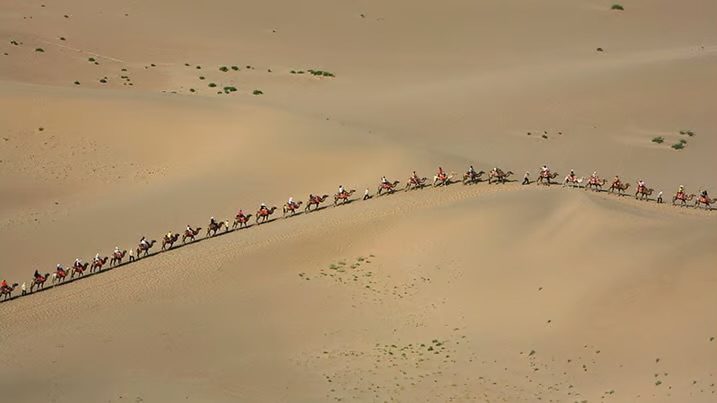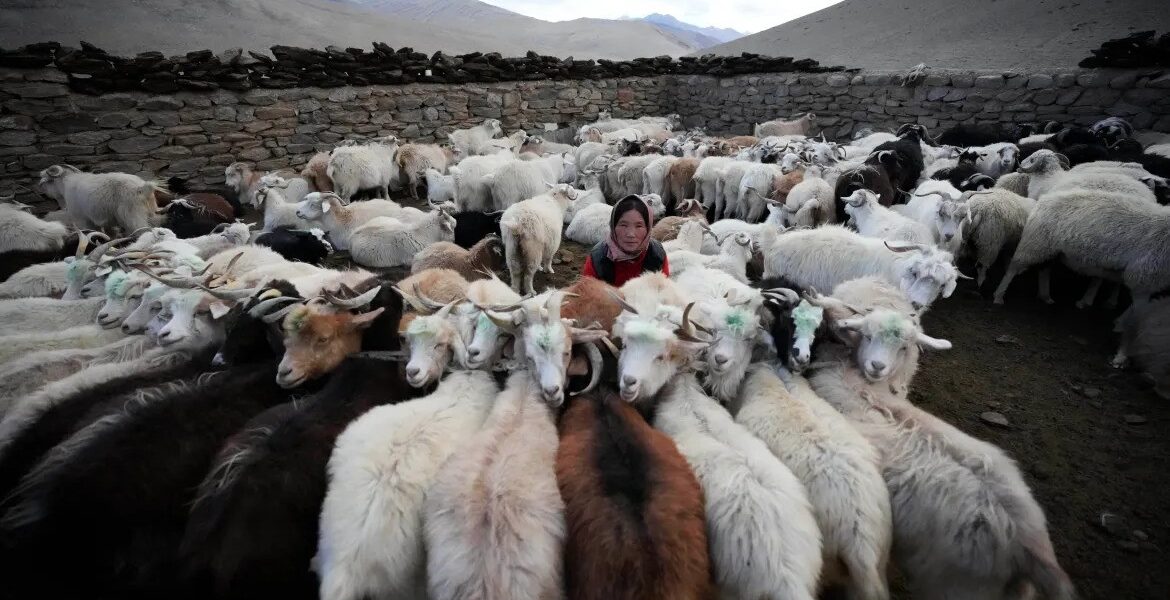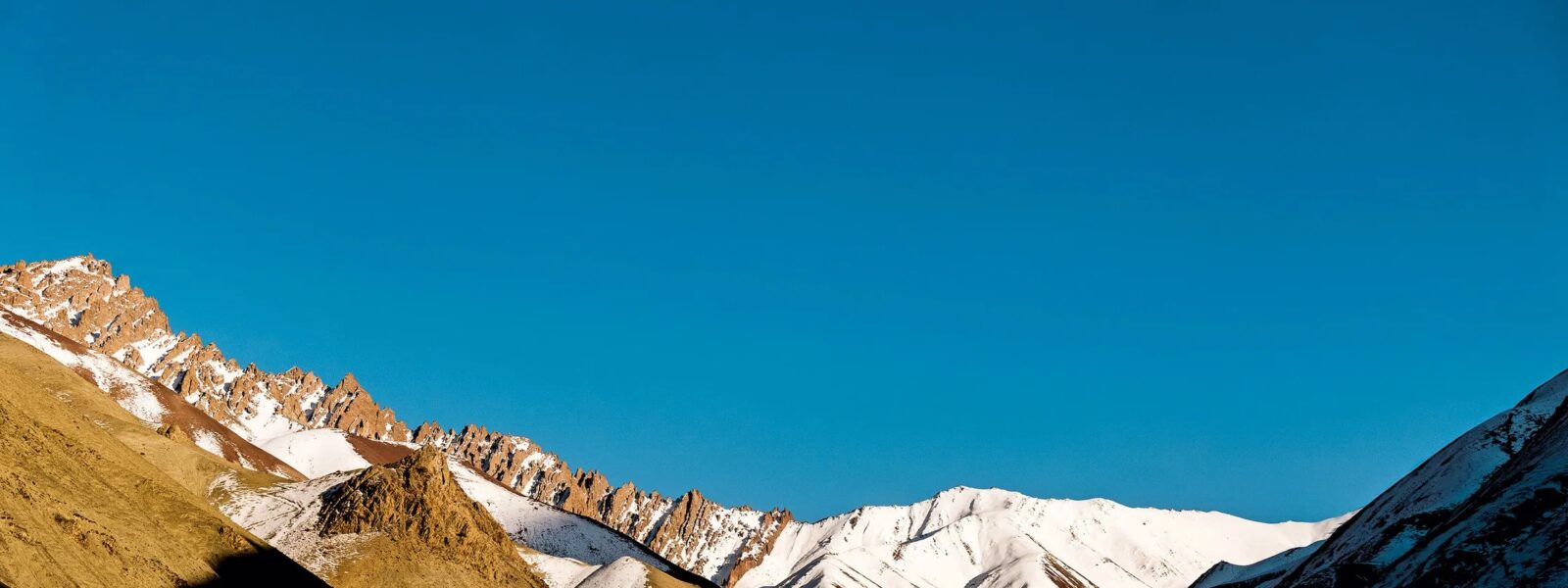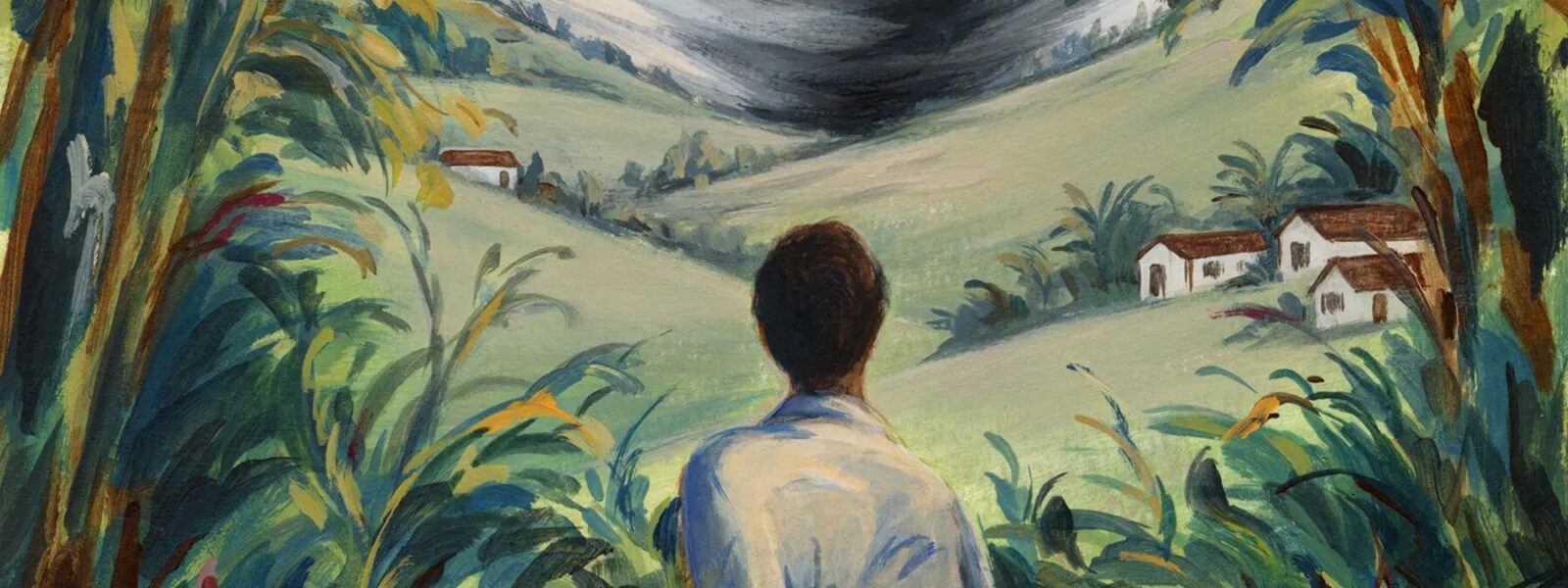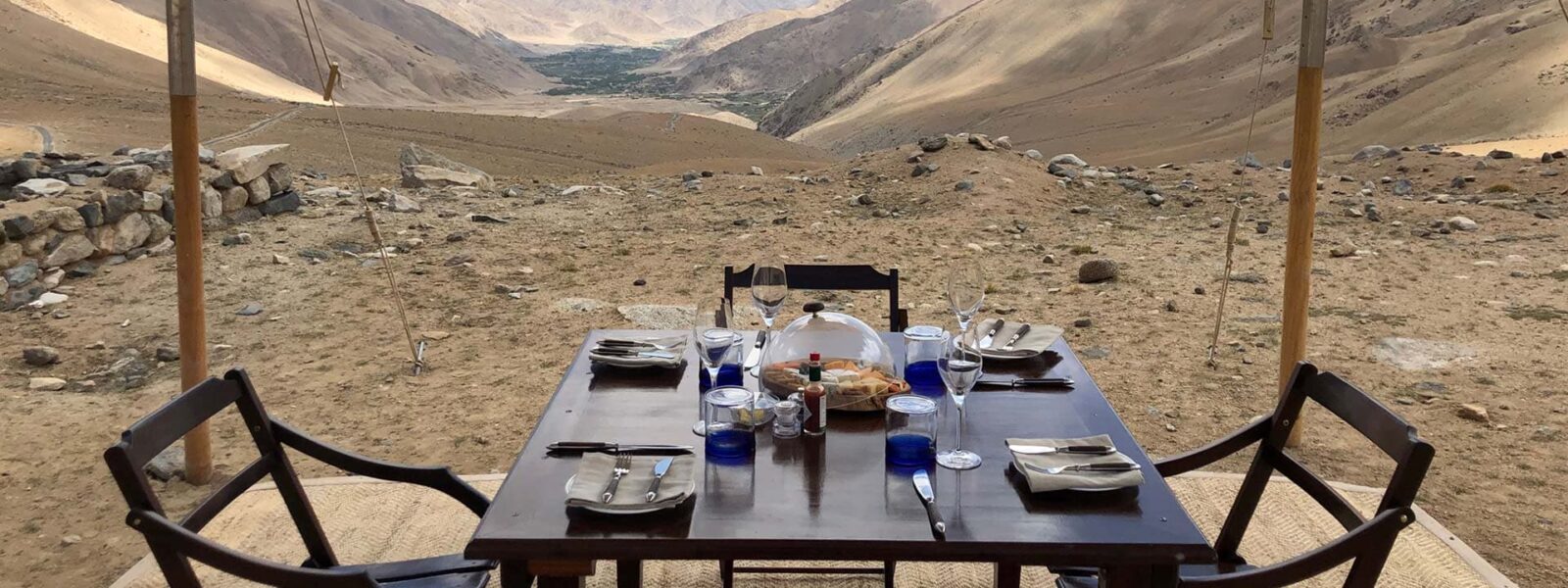Where the Winds Still Whisper of Trade
The first time I arrived in Ladakh, I wasn’t seeking silence—I was chasing stories. Not the ones printed in brochures or whispered by hotel concierges, but the kind you feel beneath your feet. The old kind. The kind that clings to a cobblestone or rises from the scent of sun-dried apricots.
What I found wasn’t just a landscape of barren beauty—it was a crossroads. A junction not only of geography but of civilizations. Ladakh, perched high in the Indian Himalayas, once pulsed with the footsteps of merchants, mule caravans, and nomads who spoke in a hundred tongues and carried silk, salt, and song across some of the world’s most treacherous passes.
Today, most maps don’t show these trails. They’ve been replaced by asphalt and flight paths. But the stories remain. This land was a living artery of the Silk Road, and its veins still hum with movement. As I stood in the bustling market of Leh, surrounded by Ladakhi women in gonchas and traders with sun-darkened cheeks, I imagined how centuries ago this same square might have echoed with Uzbek bargaining, Tibetan chants, or Persian melodies.
The Silk Road wasn’t a road—it was a rhythm. It shaped architecture, language, cuisine, and belief. It’s why you’ll find a stupa beside a mosque, a Ladakhi dish flavored with Chinese spice, or a dance that could trace its steps to the steppes of Central Asia. Walking these caravan routes isn’t just a physical journey—it’s cultural time travel.
I set out from Leh not toward a destination, but toward a feeling. Each step on the dusty trails felt like a dialogue with the past. The locals still remember the routes—through names, through songs, through paths their great-grandparents walked with laden yaks and dreams of trade.
The wind here does more than whistle. It speaks. It carries stories from Baltistan, whispers from Yarkand, and the memory of frostbitten deals struck under stars.
If you’re seeking meaning, not monuments—if you’re drawn to the idea that every landscape is a library—then Ladakh’s caravan trails are waiting. Not polished, not marked. But alive. Alive with the echo of ancient movement, and ready to share it with those who walk not just with their feet, but with their imagination.
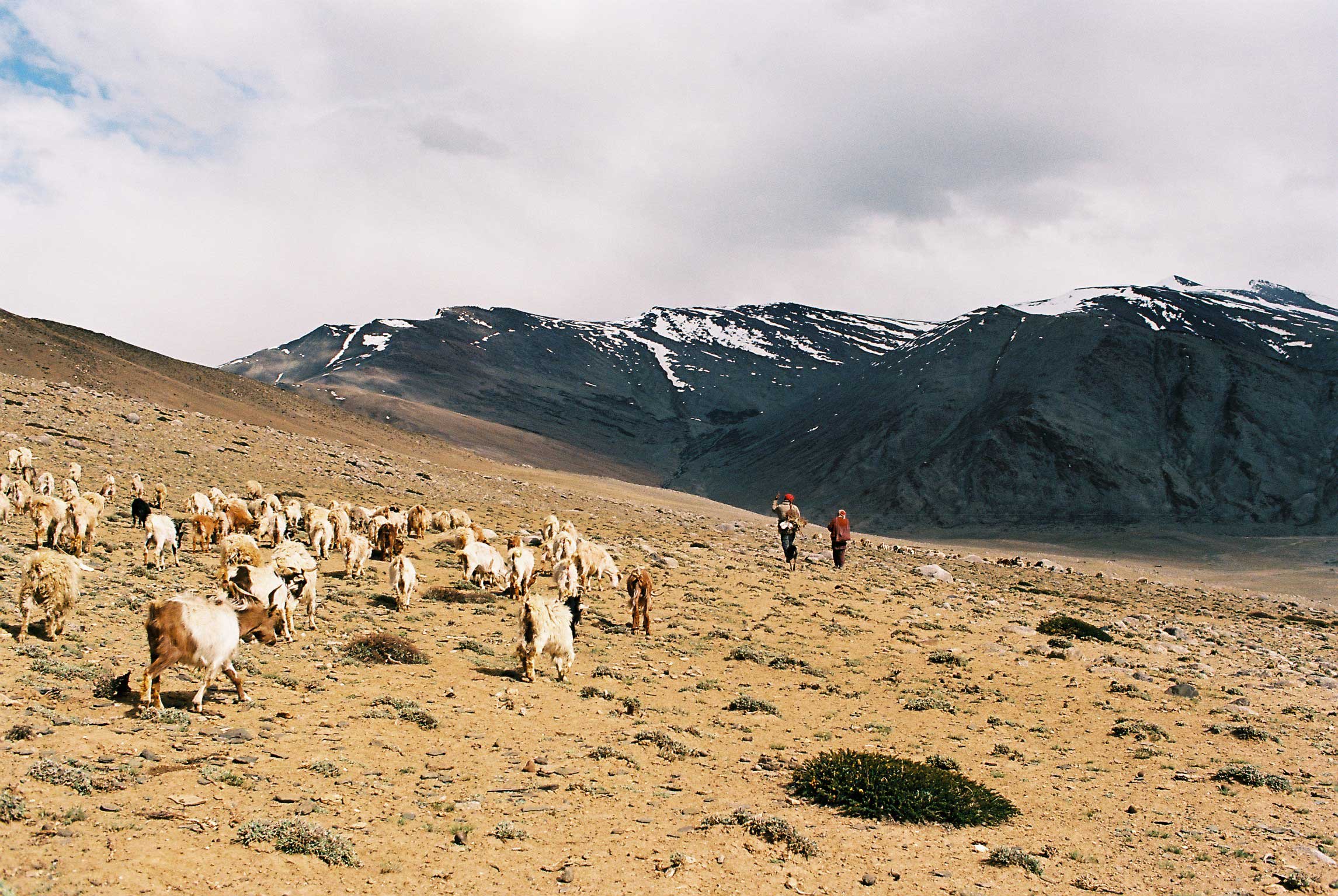
Shadows of the Silk Road: Trade and the Birth of Ladakhi Culture
You can still taste it in the butter tea. You can still hear it in the clinking of prayer wheels. The Silk Road may have faded from our maps, but in Ladakh, it lingers—in gestures, in spices, in the tilt of a rooftop or the hem of a robe.
Centuries ago, Leh was not merely a stopover—it was a cultural ferment, a high-altitude agora where traders from Yarkand, Kashmir, Tibet, and the Indus Valley converged. In the shadow of the Himalayas, they traded not only goods but ideas. Books, languages, philosophies, and gods passed through these mountains on the backs of yaks and camels.
The Ladakhi identity is not a singular thread—it is a weave. A living tapestry spun from salt and turquoise, saffron and scripture. This is a place where Mahayana Buddhism meets Sufi mysticism, where Central Asian stonework meets Himalayan woodcraft. The architectural style of Leh’s old town, with its carved lattice windows and multi-level courtyards, echoes whispers of Samarkand and Lhasa.
Imagine a merchant from Persia lighting a lamp in a Leh caravanserai, the scent of almonds in his pack. Or a Balti trader laying out woolen rugs beside a Ladakhi monk offering yak cheese wrapped in leaves. This wasn’t exoticism—it was economics. Culture followed commerce, and Ladakh became a mosaic in motion.
Walk through the village of Turtuk, and you’ll feel the Baltistani heartbeat. Wander into a kitchen in Alchi, and the aroma of thukpa might be tinged with Sichuan pepper, brought by traders generations ago. The Silk Road lives on in these details—in the spice, in the stone, in the stories.
But perhaps the most profound legacy of this trade route lies not in material goods but in Ladakh’s tolerance. Here, at 3,500 meters above sea level, hospitality became survival, and openness a necessity. Caravaners relied on strangers. So did pilgrims. So do travelers today.
In tracing the Silk Road, we are not merely revisiting economic history—we’re uncovering a cultural DNA still written in Ladakh’s valleys and voices. And when you walk those same foot-worn paths, you’re not just passing through a place. You’re stepping into a world stitched together by movement, trust, and shared breath beneath thin mountain air.
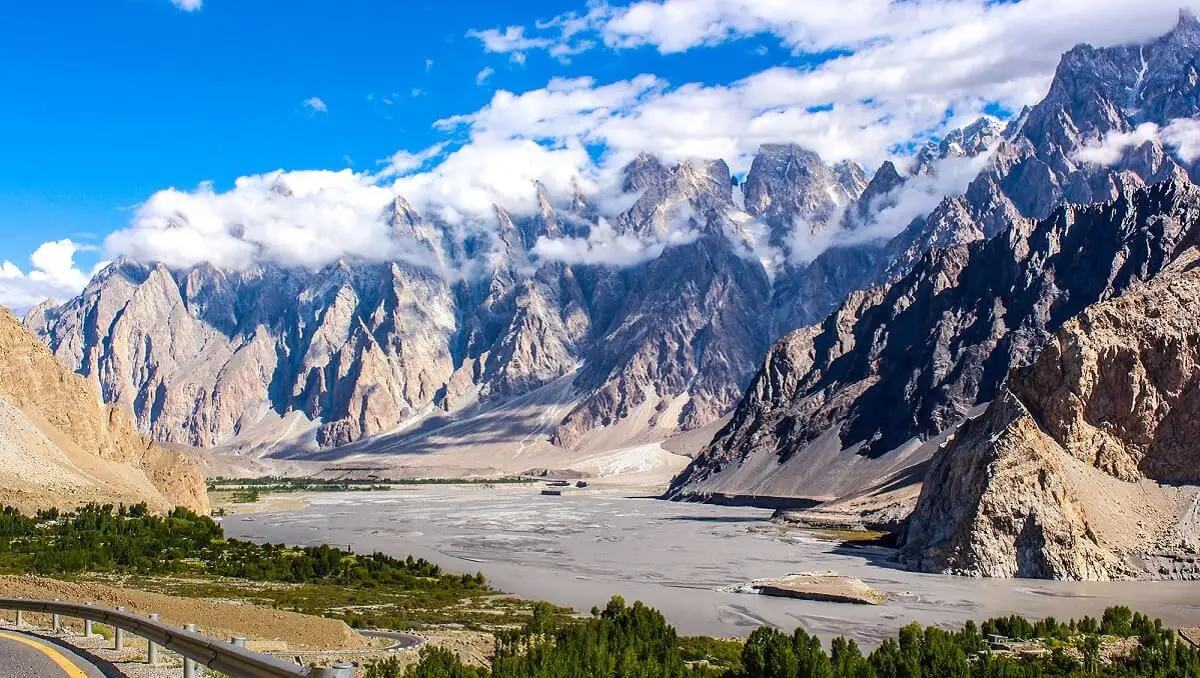
Caravanserais and Mountain Crossings: The Pulse of the Journey
The road from Leh climbs steeply toward Khardung La, one of the highest motorable passes on Earth. But long before asphalt and engines, it was hooves that carried the pulse of commerce over these jagged spines of stone.
Every step on those winding trails once echoed with the rhythm of the caravan: yak bells jingling in the thin air, leather sandals skimming frost-bitten paths, traders whispering prayers to ward off avalanches and bandits. These were no ordinary journeys—they were high-altitude odysseys. The Himalayas were not obstacles; they were arteries.
In places like Fotu La and Digar La, the old trade routes thread through rock and legend. Some paths were carved by feet hardened from months of walking, others by mule and camel caravans traveling between Yarkand and Leh, between Srinagar and the Tibetan plateau. These crossings were the pulse of the trans-Himalayan trade, transporting not only silk, salt, and turquoise but stories, languages, and beliefs.
Along the way stood caravanserais—humble fortresses of stone and warmth. Built to withstand both wind and wariness, they were sanctuaries for travelers who had seen more sky than roof. In places like Shey and Basgo, you can still find remnants of these rest stops. Some have crumbled into silence. Others are now homes, their thick walls still holding centuries of breath and laughter.
I remember stepping into one near Lamayuru, a place where a corner hearth once melted ice from beards and boots. Though the roof had given way to sky, the stones still radiated warmth. A local shepherd told me stories passed down from his grandfather—of traders with blue eyes and Bactrian camels who brought tea bricks and took away wool.
Even the mountain passes themselves seemed to carry memory. At the summit of Namika La, the wind howled like a chorus of ancient voices, and prayer flags fluttered like a merchant’s ledger, each knot a transaction between earth and sky.
These were not just routes—they were rituals. Crossing a pass was an act of devotion, not only to survival but to something larger. To movement. To connection. To possibility.
As I descended into the valley, my legs trembling with altitude and awe, I realized that following these caravan trails is not about chasing the past. It’s about stepping into a current that still flows—quiet, steady, resilient. The pulse is still there, if you walk slowly enough to feel it.
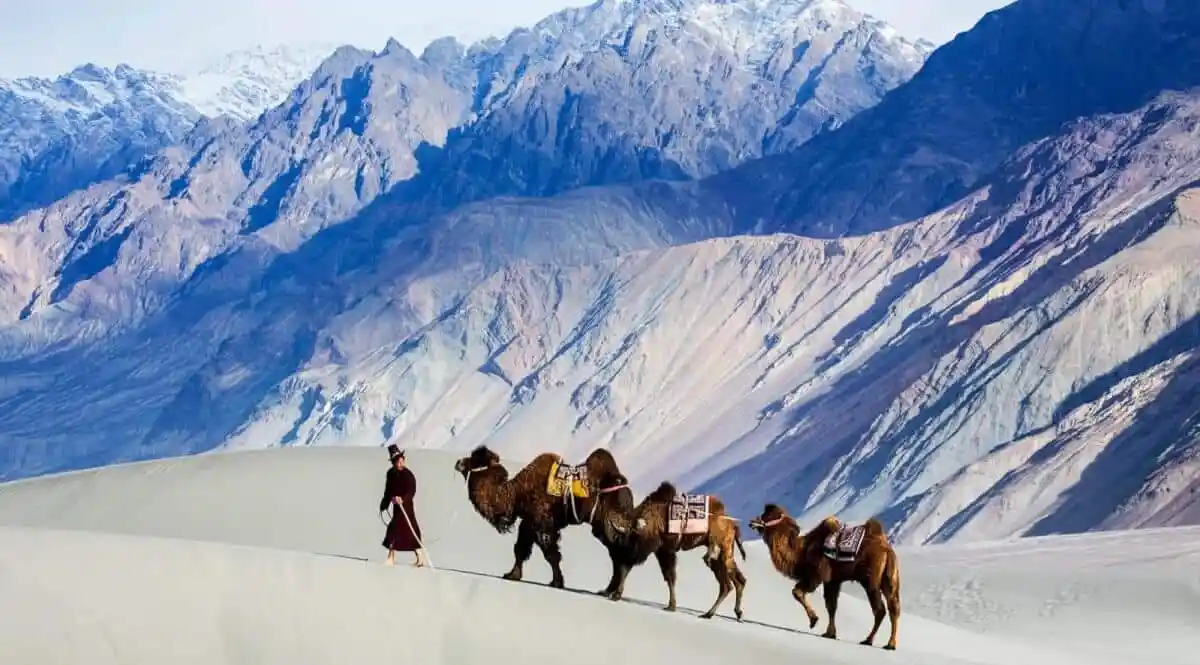
Women and Weavers of the Roadside: The Invisible Traders
Trade is often told through the footsteps of men—merchants, explorers, conquerors. But along Ladakh’s ancient caravan routes, another story quietly unfolded: one that was woven, not walked.
In the tiny village courtyards of the Indus Valley, in the shadow of soaring gompas and beneath apricot-laden branches, women held the fabric of trade in their hands—literally. They were the weavers, the brewers of butter tea, the caretakers of rest houses, and the keepers of oral histories.
The men may have crossed Khardung La with sacks of salt and bolts of silk, but it was the women who spun the wool that wrapped the traders’ bodies, who ground the barley for their sustenance, and who preserved the stories they brought back. In villages like Gya, Sakti, and Turtuk, the rhythm of the loom was just as vital to the Silk Road as the beat of the camel’s hoof.
I remember sitting on a rooftop in Uley, watching an elderly woman carding pashmina by hand. She told me of her grandmother, who once hosted traders from the north. “They came with blue glass beads,” she said, “and left behind stories of lands where the sea touches the sky.” Her words were soft, but they carried the weight of generations.
These women were traders of a different kind—traders in warmth, in textiles, in community. Their economy was one of endurance, not conquest. Of hospitality, not hierarchy. Their marketplace was the home, the hearth, the loom.
And while history may not have recorded their names, their touch remains. You can still feel it in the weight of a hand-woven shawl in Leh’s market. You can still taste it in the sweetness of apricot jam lovingly preserved in glass jars stacked on earthen shelves. You can still hear it in the lullabies sung in Balti, Dardic, or Ladakhi—songs that once soothed children to sleep while fathers bartered in distant lands.
Their legacy is tactile, intimate, enduring.
The Silk Road was never only a road—it was a web. And women were its quiet architects, stitching together lives across mountains and centuries with the patience of thread and the resilience of stone.
If you walk through Ladakh slowly enough, with open eyes and a listening heart, you will find them still—bending over looms, stirring copper pots, waving from the doorways of homes built not for display, but for welcome.
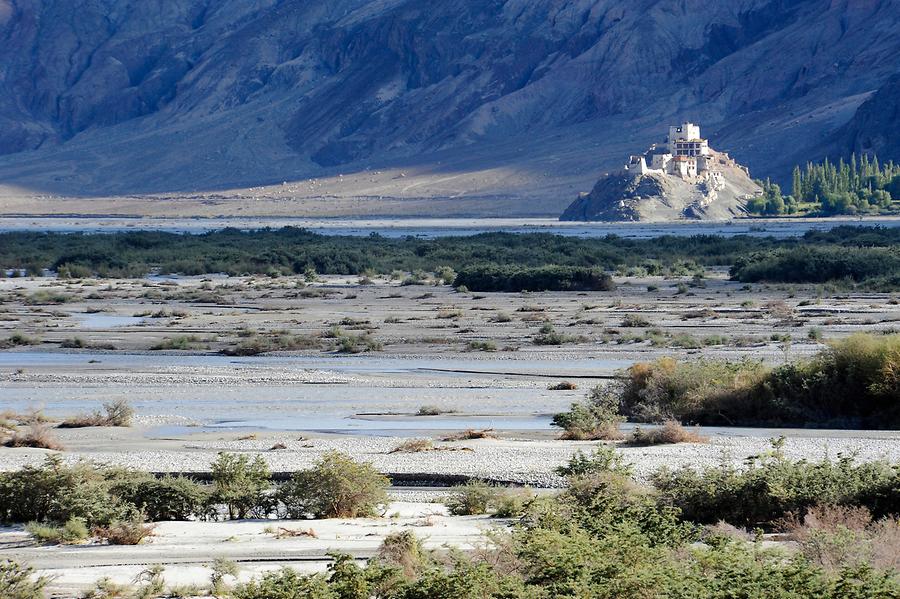
Stargazing Where Merchants Once Camped
Nightfall in Ladakh arrives like a curtain gently drawn across a stage of stone. The last yak bells fade into the distance, prayer flags flutter into stillness, and the chill in the air begins to bite. But for those who dare to sleep beneath the open sky, something extraordinary awaits.
Centuries ago, when caravans paused after long climbs through mountain passes, the traders didn’t check into hotels—they built small fires, shared simple meals, and looked up. The same stars that once guided camel caravans over the Himalayas now shimmer above your head, unchanged and eternal.
I camped once on a wind-polished ridge above Nubra, the kind of place where even silence has a presence. There were no electric lights. No buildings. Only the curve of the Milky Way, stretching like a silk ribbon across the sky. I imagined a Yarkandi trader centuries before me, lying back after a long day’s travel, fingers laced behind his head, reading the stars like scripture.
Ladakh’s night sky is not merely a spectacle—it is a map. For ancient traders, the stars weren’t decoration, they were orientation. They told of direction, of seasons, of stories passed across generations. These constellations, charted by nomads and monks, were as trusted as any compass.
Today, travelers come with telescopes and DSLR cameras, hoping to capture what the ancients simply absorbed with their eyes. Astro-tourism may be a modern term, but the awe it pursues is timeless. In places like Hanle, Tso Moriri, and the remote Changthang Plateau, the sky remains untouched by modern interference, preserving its clarity for those who still seek wonder.
There is something profoundly human about lying beneath the same sky as those who came long before you. It collapses time. It levels the playing field. The merchant and the monk, the traveler and the local—all have paused beneath this dome of night, humbled by its vastness.
And perhaps that is the greatest treasure left behind by the Silk Road: not gold, not spice, but perspective. A reminder that no matter how far we travel, we are always beneath the same stars, guided by light older than language, older than maps.
So if you find yourself in Ladakh, don’t rush indoors when the sun sets. Go outside. Look up. Let the stars tell you what traders once knew—that some paths are written not on earth, but in sky.
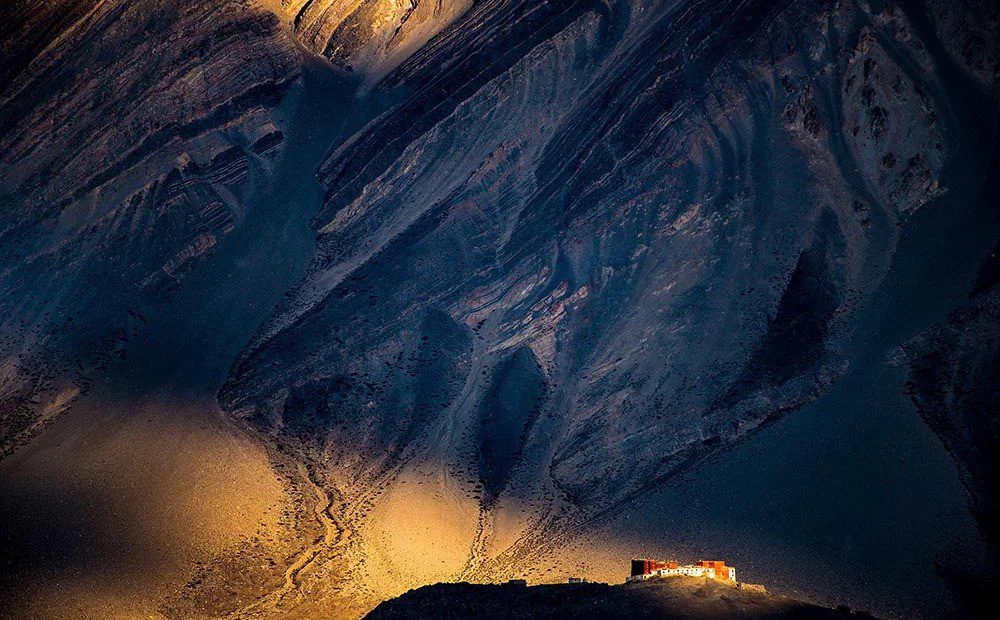
Following Their Footsteps: How You Can Experience These Trails Today
You don’t need a caravan of camels to retrace Ladakh’s ancient routes. All you need is a pair of good boots, a patient heart, and the willingness to trade comfort for connection.
Many of the same trails once walked by Silk Road traders are still here, etched into the folds of the mountains, winding through high passes and apricot valleys. What was once a lifeline of trade is now an invitation to explore—not as a consumer, but as a participant in the living heritage of this land.
One such route winds from Leh across Khardung La into the Nubra Valley, echoing the footsteps of merchants who once made the long journey from Yarkand to India. The trail to Turtuk, a village once closed to foreigners, now opens its gates with quiet pride. Here, you’ll find Baltistani architecture, Himalayan hospitality, and apricots so sweet they taste like sun made flesh.
To the west lies the ancient route to Zanskar, a high-altitude corridor connecting monasteries, hidden villages, and stone bridges that seem to defy gravity. These are not easy paths—they demand breath, time, and respect. But they give back in beauty what they take in effort.
Modern trekkers walk with different intentions, but the echoes remain. You may not carry bolts of silk or sacks of salt, but your steps still press into the same soil, pass the same mani walls, and drink from the same icy streams. In doing so, you inherit a connection deeper than the itinerary suggests.
Stay in homestays rather than hotels. Learn to greet in Ladakhi. Drink butter tea not just for taste, but to understand the rhythm of mountain life. These trails are not meant to be conquered—they’re meant to be listened to.
Eco-tours, guided cultural walks, and long treks like the Rumtse to Tso Moriri trail offer windows into the ancient rhythms of the land. Along the way, you’ll meet the descendants of those who once guided caravans. Their stories are not museum pieces—they are lived, daily, in stone courtyards and smoky kitchens.
Retracing the Silk Road in Ladakh is not about nostalgia. It’s about continuity. It’s about stepping out of the pace of the world and into a path where slowness is wisdom and footsteps are sacred.
So bring your curiosity. Pack light. Walk slow. And above all, walk with wonder. The mountains will do the rest.
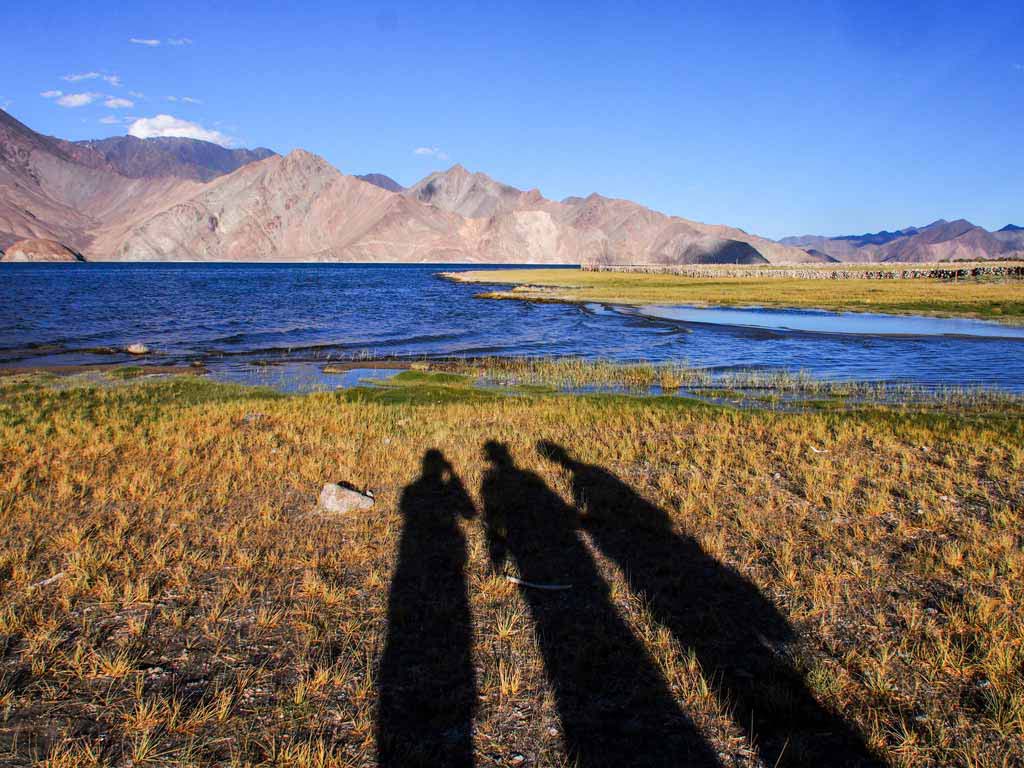
The Soul of the Trail Lives On
Some trails fade. Others endure—not in maps or monuments, but in memory and movement.
In Ladakh, the Silk Road is no longer marked by camel trains or border caravans. But if you listen carefully, you’ll still hear its breath in the rustle of barley fields, in the low chant of monks echoing off canyon walls, and in the quiet hospitality of a woman who offers you butter tea without asking your name.
The ancient trade routes are not relics. They are relationships. Between land and people, between past and present, between traveler and trail. Each footstep taken here is not just a journey through space—it is a conversation with time.
I remember my last morning in Ladakh. A thin mist drifted through the valley. A child waved as I passed. Somewhere in the distance, a dog barked and a bell chimed. I paused on the trail, turned toward the mountains, and felt—more than understood—that I was not alone. That my walk was part of something older, wider, softer.
Ladakh doesn’t ask for performance. It doesn’t demand attention. But it offers a rare thing: continuity. A sense that while empires rise and dissolve, while borders are drawn and redrawn, the soul of the trail remains. Waiting. Breathing. Remembering.
The Silk Road echoes in Ladakh not because of what it once was, but because of what it continues to be—a space for exchange. Not just of goods, but of gaze, language, and silence.
So when you come here—and I hope you do—don’t rush to tick off highlights. Sit on a rooftop in the wind. Walk without a destination. Share a quiet meal. And let the rhythm of the trail walk you instead.
Because in this corner of the world, the road doesn’t end. It simply changes its pace. And you, if you’re lucky, get to walk with it.
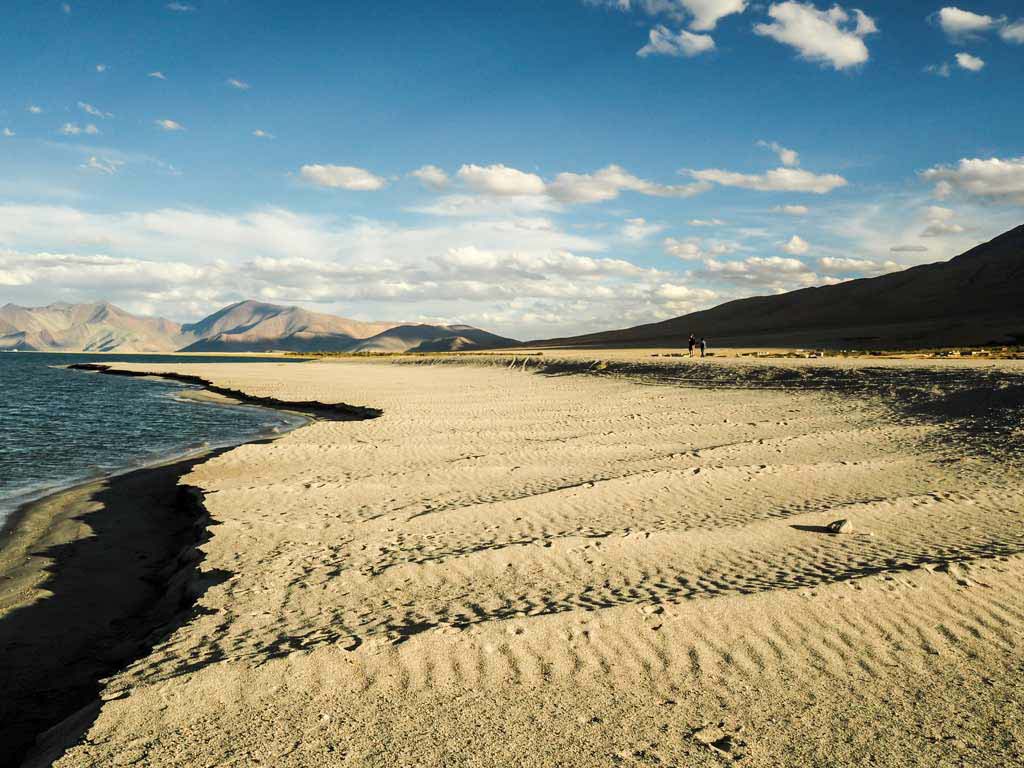
Born on the wind-stirred coast of Ireland and now settled beside the still waters of Lake Bled in Slovenia,
Elena Marlowe is an essayist who gathers stories the way some gather stones—gently, deliberately, and always with wonder.
Her writings trace the subtle threads between landscape, memory, and the quiet ache of belonging,
drawing readers into worlds where time moves differently and every path leads inward as much as onward.

